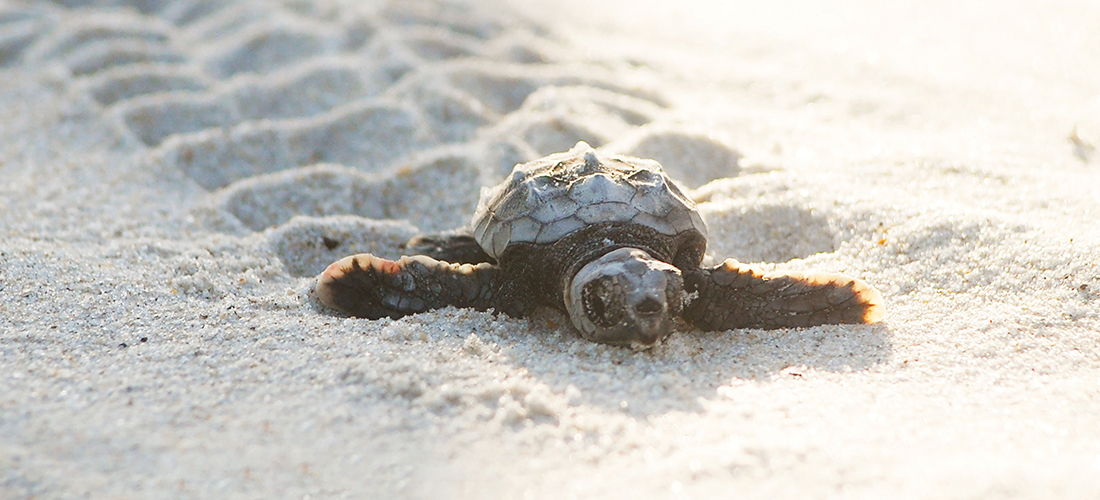Two for the Road
For Jan and Steve Capps, every day was a pilgrim’s progress
By Dana Sachs
Last year, you two walked 200 miles of the famed pilgrim trail Camino de Santiago in Spain. That’s a long walk, but this September you’re planning to go back and spend six weeks hiking an even longer portion of the trail — 485 miles through France and Spain. What is the Camino de Santiago?
Jan: It’s called “the way of St. James.” According to the story, St. James was responsible for spreading Christianity to the Iberian Peninsula. After his martyrdom, his remains were buried in Santiago de Compostela in Spain. Since that time, people have walked this path as a pilgrimage in remembrance of St. James, but also for other reasons, ranging from deeply personal to exercise and fun.
What made you decide to do it?
Jan: I had seen the movie The Way with Martin Sheen. I just loved the movie, and I thought the trek would be great exercise. Then I heard that Bill Anlyan, from Wilmington, had done it. I asked him to tell me about it. And he kept having people say, “I’d like to do it.” So he planned a group trip.
Steve: It ended up being 18 of us.
Jan: And I pretty much dragged Steve along with me.
Steve: That’s an accurate description. One of us had really low expectations about this trip.
Did you ever have any moments of thinking, “What have I gotten myself into here?”
Jan: The first day was awful.
Steve: Horrible. We trekked 24 miles. You read, “Don’t overdo the first day.” Well, we violated Rule No. 1.
Jan: It was flat. It was dusty. It was hot. It was not pretty. And it was 24 miles.
Steve: One of our companions on the trip said, “I’ve walked through hay fields in Georgia that look better than this.”
So what were you thinking at the end of that day?
Steve: That it was probably the dumbest thing that I’d ever signed up for. We could have walked from Wilmington to Greensboro and accomplished the same thing. I suggested that we call it “The Camino de Burgaw.”
Something must have changed. You’re planning to do it again, and walk more than twice as far.
Steve: I did start to like it. You get into a rhythm and you know what your purpose is for the day. You know where you’re going, what you’re going to do. You don’t necessarily know what you’re going to see, but you know you’re going to get up, dress, you take care of your feet. You pack up, make sure you’ve got your water. It becomes a great rhythm.
Jan: And, to me, there was another rhythm — because you really are by yourself a lot — and it’s the rhythm of your foot, your foot, your pole, your pole. Foot, pole, foot, pole.
How old are you two?
Steve: 58
Jan: 65
Had you ever done anything like that before?
Steve: We were accustomed to less strenuous trips.
Jan: And that was part of the impetus. We went on a more standard tour and spent time on a number of tour buses. I remember saying, “You know what? I’m going to reach a point in my life where if I want to travel I’m going to be sitting on a lot of buses. But I don’t have to be in the bus yet.”
What were the days like, as you hiked?
Jan: Mostly, we were walking in the countryside where there are beautiful vistas, a lot of agricultural areas, crops, cows, working farms. You’ll wait for cows to cross the road sometimes. Fog can creep in if you start walking early enough. Every day is different, and there is some vista that is beautiful every day. Well, almost every day. There were large cities like Leon, which is a bustling city of over 100,000 people with a fabulous cathedral. There were also medium-size cities, like Astorga, with a beautiful, vibrant city square with a cathedral that you pass on your way out of town. There were also villages where at any point in time, the pilgrims might outnumber the locals.
Tell me about the group.
Jan: We ranged in age from mid-20s to mid-70s. Several people belonged to one church in Wilmington, St. Paul’s Episcopal. One person was from West Virginia, one from Virginia, one from Montana. One lady lived in a yurt. One was an artist. A retired airline pilot. A retired television executive. All were interesting. The one thing they all had in common was that they liked to laugh. But we also met folks who were not a part of our travel group, but who became a part of our story. Kevin, the attorney from D.C. Alexander, from Germany. Santiago, from Spain. The mother-daughter combo from Canada. The Australian older man and a young Aussie couple.
Can we go back to “taking care of your feet”?
Steve: Job Number One every day is: “You’ve got to take care of your feet.” Its mission: Critical. Blisters are terrible, because they don’t go away. They get really nasty. There’s this stuff called Compeed. It wasn’t available in the United States, but as soon as we got to Spain I found a pharmacy and bought it. It’s like a thin Vaseline, like putting on deodorant. I was religious about putting it all over my feet.
Jan: I wasn’t religious about it until I got blisters.
Steve: On the first day of our trek, we get to this little restaurant place and I walk in and get coffee and there’s another hiker sitting there. She says, “You’re about five minutes too late. If you had been here five minutes earlier, I would have gotten you to sew up my foot.”
Some might wonder why anyone would put themselves through this.
Jan: People do it for religious reasons. People do it for personal reasons. People do it for exercise. For me, being off the grid for six or eight hours every day was really satisfying, along with this rhythm that I really loved.
What were your favorite churches?
Jan: Every community had a church, it seemed. The churches were works of art even in the smallest villages. In Santiago, the Cathedral of Santiago de Compostela dominates the center city. It is quite beautiful and imposing. You can’t miss it. They hold a Mass in Spanish with portions in English and French for the pilgrims and tourists. They also swing incense from one side of the church to the other reaching the cathedral ceiling. The incense container is called a botafumerio. Eight men in red robes (called tiraboleiros) swing the botafumerio. It is quite a sensational production.
Did you find the experience religious or spiritual?
Steve: Not everybody defines spirituality the same. For some folks, it may have been a religious experience, “spiritual” in the sense that you are outside and you do get a high. You walk that much and your body is going to generate a lot of endorphins. It’s natural beauty. And it does, I think, put you in a different frame of mind. It gives you a different perspective on life — what’s important and what’s not so important. And it’s simple. It’s about as basic as you can get. You walk.
Jan: It’s a totally personal journey. Everybody has a different reaction to it.
Steve: I would say that, without fail, good or bad, nobody finishes it the same as they were when they started it.
Jan: We know we are lucky to be able to take trips like this. Travel isn’t a right. It is a privilege. And we are lucky to be healthy!
How would you tell others to train for a trip like this?
Steve: If you can, walk 10 to 15 miles on Wrightsville Beach. In August. And that’s flat.
Jan: We walk six or seven miles a day, four or five times a week.
Steve: But we’ll have to pick that up.
So, how are you feeling about going again in September?
Steve: I’m a little apprehensive. Can you put lightning in a bottle twice? I don’t know.
Was there a moment that really inspired you?
Jan: One morning, we walked in the clouds. The elevation was pretty high at that point and the sun came up as we were walking. But every day there was something remarkable. b
Dana Sachs’ latest novel, The Secret of the Nightingale Palace, is available at bookstores, online and throughout Wilmington.


